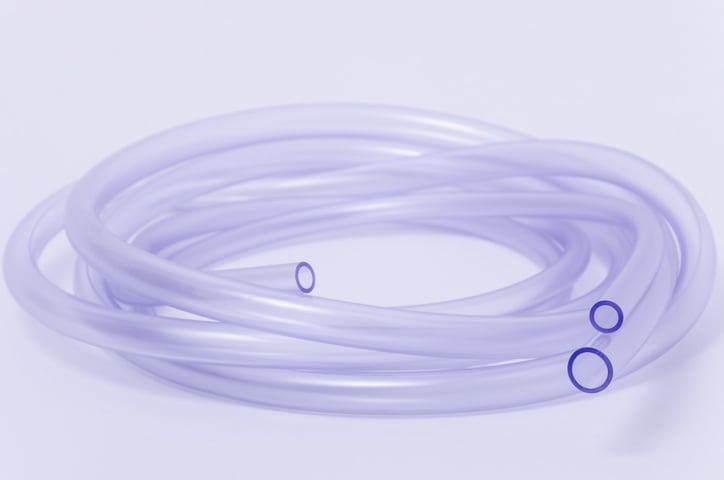
Fluoropolymers are a family of synthetic polymers that are characterized by their high resistance to heat, chemicals, and low surface free energy. These properties make them ideal for use in various industrial and consumer applications. Especially the low surface tension of fluoropolymers can be a problem in many applications. For example, coating fluoropolymer surface possess a challenge due to their poor wettability. Chemical etching of fluoropolymers is one of the most used methods to modify the material to be more hydrophilic to allow adhesion of the coating. To verify the success of the process, water contact angle measurements are commonly used.
A native fluoropolymer surface has extremely low surface free energy, typically below 20 mN/m. This translates to water contact angle values of close to 90 degrees or even higher. Coating adhesion to such a surface is practically impossible unless the surface free energy is increased. Chemical etching of fluoropolymers is used for that.
Chemical etching of fluoropolymers is a process used to selectively remove material from the surface using chemical solutions. Unlike many other materials, fluoropolymers are highly resistant to chemical attack, making them difficult to etch. However, certain types of fluoropolymers, such as polytetrafluoroethylene (PTFE), can be etched using a combination of strong oxidizing agents, such as sodium or potassium hydroxide, and a surfactant or wetting agent to improve solution wetting and penetration. Etching can be used to modify the surface properties of fluoropolymers for various applications, such as improving adhesion for bonding.
An additional challenge for the surface modification is that, as fluoropolymer is exposed to the atmosphere, it easily renders back to a more hydrophobic state. This is common behavior also for plasma-etched polymers. To ensure the state of the surface, contact angle measurements can be utilized.
To hear more about adhesion and wettability and how contact angle measurements can be utilized to evaluate them, register for a webinar through the link below.
Discover why contact angle is essential for adhesion, coatings, and quality control. Learn how surface wettability impacts product performance.
Discover why PFAS-free coatings are needed, the challenges they present, and key strategies for developing high-performance alternatives.
At the heart of droplet formation are two key molecular forces: cohesion and adhesion.
Contact angle measurements provide a golden standard for evaluation of surface properties for quality control.
Contact angle is the angle a droplet forms in contact with a solid surface. Thermodynamically, it is a balance between cohesive and adhesive forces.
This blog post discusses the importance of adhesion in the lithography process and how to predict adhesion with contact angle measurements.
HMDS is used to render the surface of silicon more hydrophobic and thus to match better with the chemistry of the photoresist.
This blog post explains the concept of RCA cleaning and it's relation to contact angle.
Contact angle measurements can be used to evaluate the cleanliness of silicon wafers.
